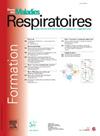猪离体肺灌注12小时期间灌注液成分校正的评价
IF 0.5
4区 医学
Q4 RESPIRATORY SYSTEM
引用次数: 0
摘要
体外肺灌注(EVLP)是一种保存技术,可以评估和修复边缘供体移植物,从而扩大供体池。然而,EVLP目前在临床实践中被限制在6小时,至少有30%的移植物在灌注期结束时不符合移植标准。目前,EVLP主要用于肺移植前的肺功能评估,而不是修复受损的肺。我们的目标是延长EVLP的持续时间,因为这将允许治疗的应用,并可能增加可用于移植的肺数量。我们假设维持灌注液中的pH值、电解质和葡萄糖水平可以使EVLP持续超过6小时,同时保持器官的完整性。因此,我们在猪模型中研究了灌注纠正液在12小时EVLP中的作用。方法取12只猪肺块,常温EVLP 12小时前进行冷保存。根据灌注液的不同,将肺块平均分为两组。所有肺块灌注STEEN溶液™,每两小时更换100 mL新鲜STEEN溶液™(标准组,n = 6)或修改溶液(1/3 STEEN溶液™,1/3葡萄糖溶液[2.5%],1/3碳酸氢钠溶液[14 mg/mL]),旨在纠正灌注液成分(校正组,n = 6)。测量灌注液电解质、葡萄糖、细胞因子、pH、分氧压(PO2)、肺血管阻力(PVR)和依从性。EVLP期结束后,将左肺移植给供体亲缘猪。对右肺进行组织学和电镜检查。结果在EVLP过程中,灌注纠正成功地将电解质和pH维持在生理范围内。然而,血糖升高的水平高于预期。EVLP后,矫正组Kohn's孔密度增大,水肿减少,透明膜增多。校正组肺顺应性和氧合性趋于较高,但无显著性意义。两组PVR相似,移植后ΔPO2组间无显著差异。结论我们成功地纠正了灌注电解质水平和pH值,但未能将血糖维持在生理范围内。在这些情况下,矫正组没有明显的益处,但发生了一些组织学变化。需要进一步的研究来正确校正灌注液成分并将葡萄糖水平维持在生理范围内。因此,有效的灌注成分校正对EVLP持续时间的影响尚不清楚,仍需进一步研究。本文章由计算机程序翻译,如有差异,请以英文原文为准。
Evaluation of perfusate composition correction during 12-hour ex-vivo lung perfusion in swine
Introduction
Ex vivo lung perfusion (EVLP) is a preservation technique that allows the evaluation and reconditioning of marginal donor grafts, thereby expanding the donor pool. However, EVLP is currently limited to 6 hours in clinical practice and at least 30 % of grafts fail to meet transplantation criteria at the end of perfusion period [1]. Today, EVLP is mainly used to assess lung function before lung transplantation rather than to recondition damaged lungs. We aim to prolong the duration of EVLP as this would allow the application of therapies and potentially increase the number of lungs available for transplantation. We hypothesize that maintaining pH, electrolytes, and glucose levels in the perfusate would allow EVLP for more than 6 hours while preserving organ integrity. Thus, we investigated the effect of a perfusate correcting solution during a 12-hour EVLP in a porcine model.
Methods
Twelve porcine lung blocks were collected and cold-preserved prior to 12 hours of normothermic EVLP. The lung blocks were allocated equally into two groups, according to the perfusate solution. All lung blocks were perfused with STEEN solution™, 100 mL of which was replaced every two hours with either fresh STEEN solution™ (standard group, n = 6) or a modified solution (1/3 STEEN solution™, 1/3 glucose solution [2.5 %], 1/3 sodium bicarbonate solution [14 mg/mL]) designed to correct the perfusate composition (corrected group, n = 6). Perfusate electrolytes, glucose, cytokines, pH, partial oxygen pressure (PO2), pulmonary vascular resistance (PVR), and compliance were measured. After the EVLP period, the left lungs were transplanted into donor-related pigs. The right lungs were used for histology and electron microscopy.
Results
During EVLP, perfusate correction succeeded in maintaining electrolyte and pH, within physiological ranges. However, glycemia increased at a higher level than expected. Higher density of Kohn's pores, as well as less edema and more hyaline membranes, were observed in the corrected group after EVLP. Lung compliance and oxygenation tend to be higher in the corrected group without reaching significance. PVR was similar in both groups, and no significant difference was observed in ΔPO2 between groups after transplantation.
Conclusion
We succeeded in correcting perfusate electrolytes levels and pH, but not maintaining glycemia in physiological ranges. In these conditions, no benefit was clearly demonstrated in the corrected group, while some histological changes occured. Further studies are needed to properly correct perfusate composition and maintain glucose levels within physiological ranges. Thus, the effect of an efficient perfusate composition correction on the duration of EVLP remains unknown and still needs to be investigated.
求助全文
通过发布文献求助,成功后即可免费获取论文全文。
去求助
来源期刊

Revue des maladies respiratoires
医学-呼吸系统
CiteScore
1.10
自引率
16.70%
发文量
168
审稿时长
4-8 weeks
期刊介绍:
La Revue des Maladies Respiratoires est l''organe officiel d''expression scientifique de la Société de Pneumologie de Langue Française (SPLF). Il s''agit d''un média professionnel francophone, à vocation internationale et accessible ici.
La Revue des Maladies Respiratoires est un outil de formation professionnelle post-universitaire pour l''ensemble de la communauté pneumologique francophone. Elle publie sur son site différentes variétés d''articles scientifiques concernant la Pneumologie :
- Editoriaux,
- Articles originaux,
- Revues générales,
- Articles de synthèses,
- Recommandations d''experts et textes de consensus,
- Séries thématiques,
- Cas cliniques,
- Articles « images et diagnostics »,
- Fiches techniques,
- Lettres à la rédaction.
 求助内容:
求助内容: 应助结果提醒方式:
应助结果提醒方式:


